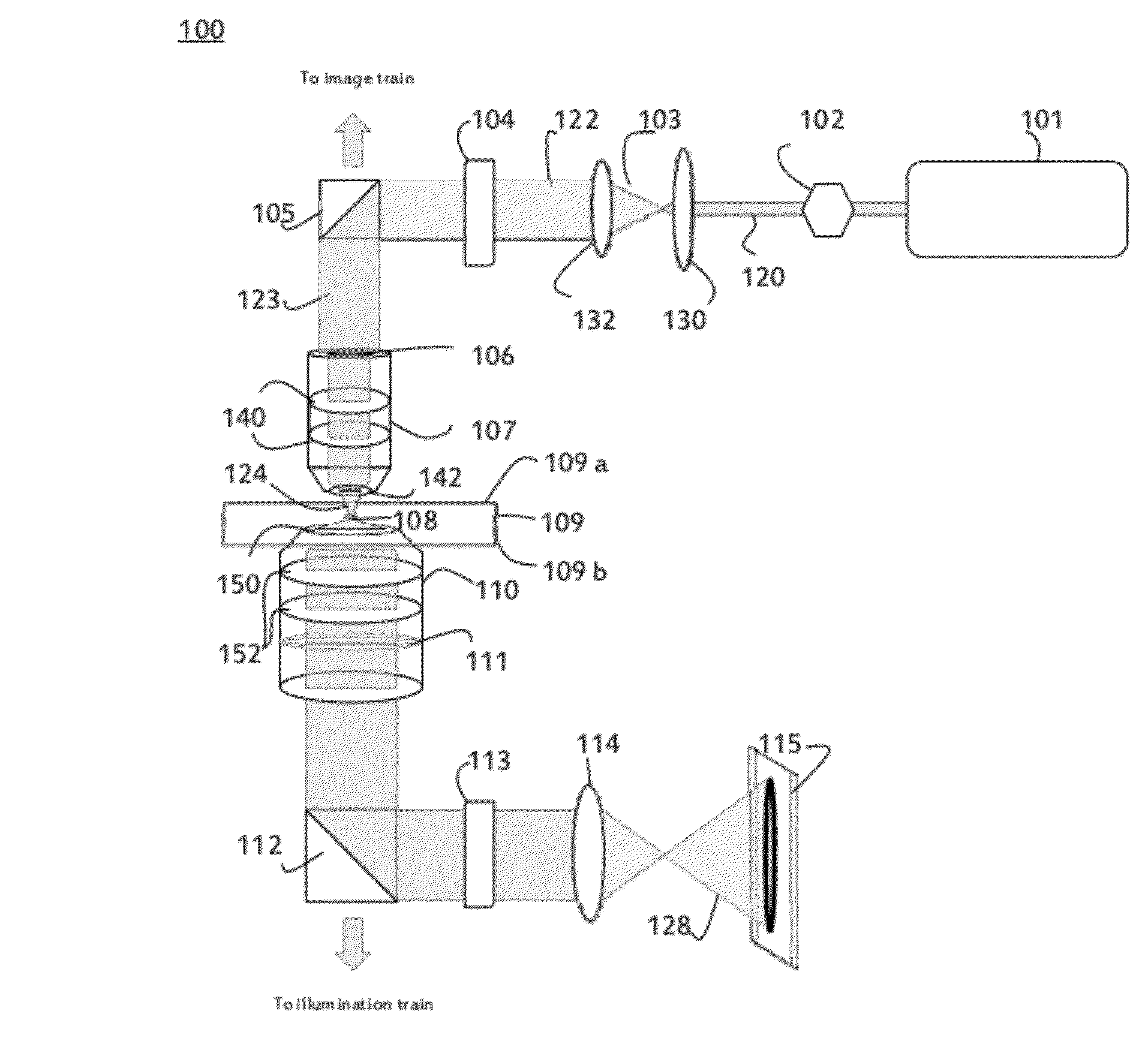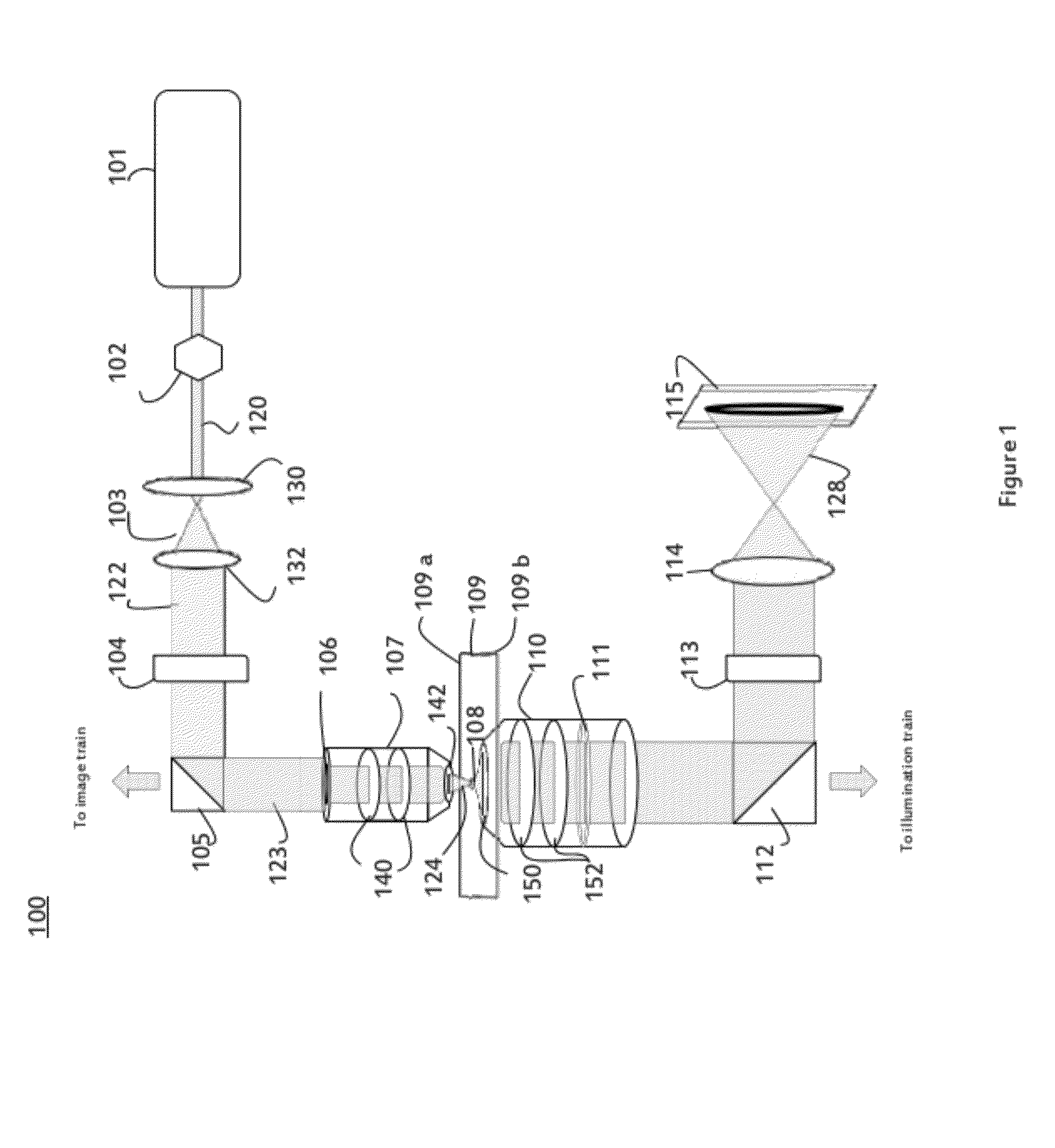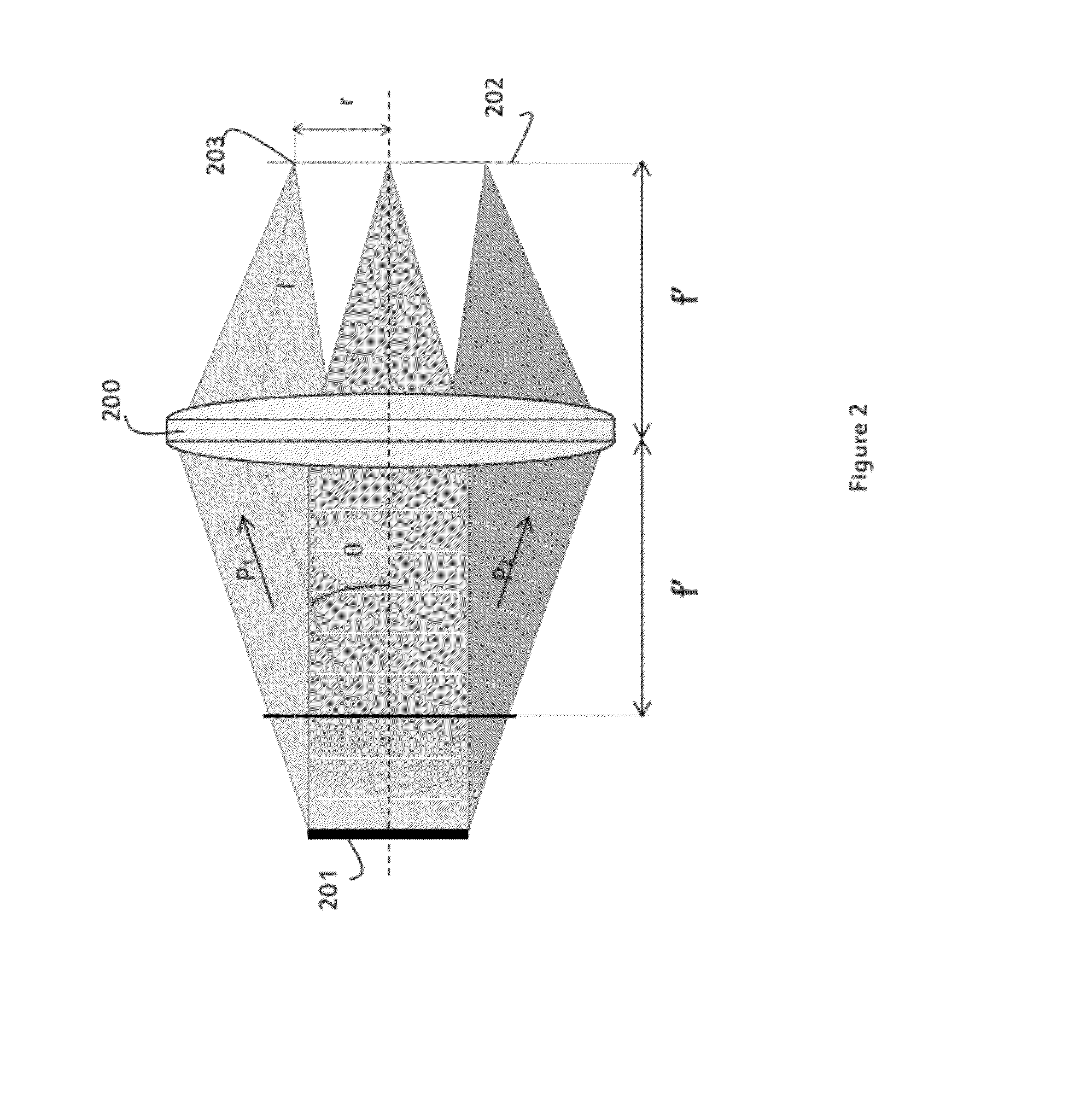Method and Apparatus for Measuring the Optical Forces Acting on a Particle
a particle and optical force technology, applied in the direction of optical elements, instruments, masers, etc., can solve the problems of inability to measure forces on non-spherical samples, inability to make measurements with non-gaussian laser beams, and system impractical commercial us
- Summary
- Abstract
- Description
- Claims
- Application Information
AI Technical Summary
Benefits of technology
Problems solved by technology
Method used
Image
Examples
Embodiment Construction
[0037]In the following description, numerous specific details are set forth in order to provide a thorough understanding of the present invention. It will be understood, however, to one skilled in the art, that the present invention may be practiced without some or all of these specific details. In other instances, well known process operations have not been described in detail in order not to unnecessarily obscure the present invention. It is also important to note that the accompanying drawings are not drawn to scale.
[0038]FIG. 1 illustrates a system 100 for measuring optical forces acting on a particle 108 in accordance with one implementation of the present invention. System 100 includes a chamber 109 for suspending a particle 108 in a suspension fluid between an entry cover 109a and an exit cover 109b which are typically made of glass. Trapping of particle 108 is achieved by focusing a light beam 124 on the suspended particle with the use of a high numerical aperture trap objec...
PUM
 Login to View More
Login to View More Abstract
Description
Claims
Application Information
 Login to View More
Login to View More - R&D
- Intellectual Property
- Life Sciences
- Materials
- Tech Scout
- Unparalleled Data Quality
- Higher Quality Content
- 60% Fewer Hallucinations
Browse by: Latest US Patents, China's latest patents, Technical Efficacy Thesaurus, Application Domain, Technology Topic, Popular Technical Reports.
© 2025 PatSnap. All rights reserved.Legal|Privacy policy|Modern Slavery Act Transparency Statement|Sitemap|About US| Contact US: help@patsnap.com



